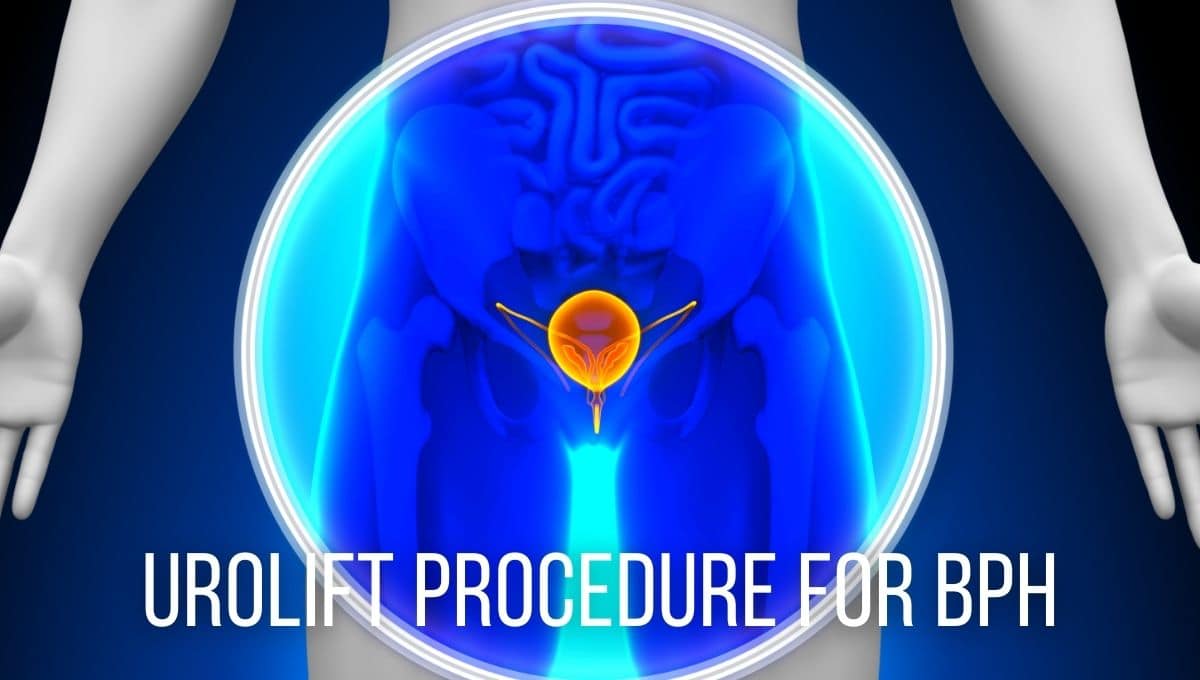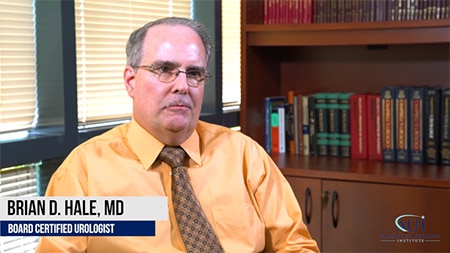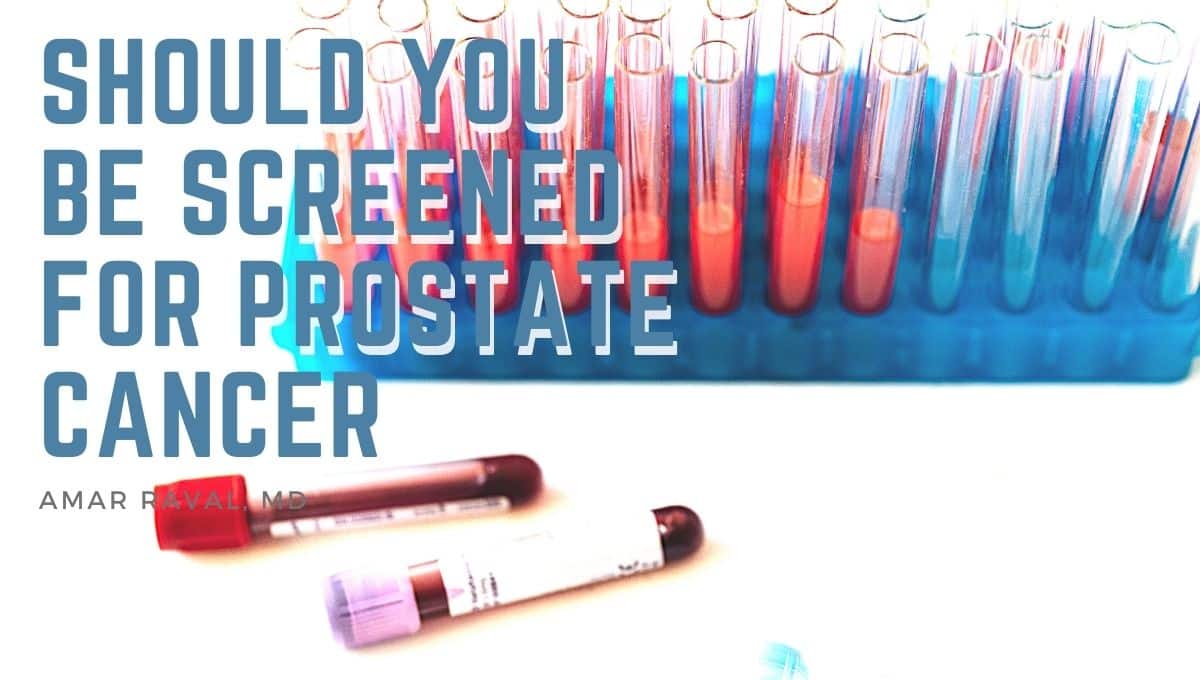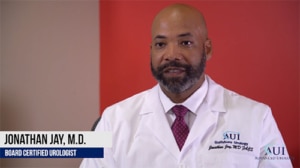The loss of bladder control known as Urinary Incontinence is a normal problem that is more common in women than men. The effects of urinary incontinence range from barely noticeable to severe. As Dr. Amar Raval from the Advance Urology Institute says, “It is a big issue for women out in public.” Incontinence can cause difficult and embarrassing situations.
There are many causes of urinary incontinence. To understand these causes, it is important to remember that urinary incontinence is a symptom, not a disease. Lifestyle choices that can exacerbate the problem include consuming alcohol, caffeine, spicy foods and certain medications. For women, life events that affect women’s bodies in a way that can cause incontinence include pregnancy, childbirth, menopause and aging. Other causes can be found in weight, family history and health.
 The different types of urinary incontinence can exhibit a variety of symptoms. Stress incontinence is characterized by small leaks of urine due to pressure on the bladder while laughing, coughing, sneezing or exerting oneself. The small leaks of overflow incontinence happen when the bladder has not fully emptied during urination. Urge incontinence is the sudden and intense urge to urinate, sometimes resulting in an involuntary loss of urine. Having to urinate frequently through the night is another symptom experienced by women with urge incontinence. It is also common for women to be affected by more than one of these types of incontinence.
The different types of urinary incontinence can exhibit a variety of symptoms. Stress incontinence is characterized by small leaks of urine due to pressure on the bladder while laughing, coughing, sneezing or exerting oneself. The small leaks of overflow incontinence happen when the bladder has not fully emptied during urination. Urge incontinence is the sudden and intense urge to urinate, sometimes resulting in an involuntary loss of urine. Having to urinate frequently through the night is another symptom experienced by women with urge incontinence. It is also common for women to be affected by more than one of these types of incontinence.
Fortunately, a wide range of treatment options is available. Women can work with their urologist to find the best treatment option for their individual situation. In some cases, treatment can be as easy as making slight lifestyle changes or taking an oral medication. Botox and acupuncture can help relieve stress incontinence. For more advanced cases, urethral slings can ease symptoms by lifting the urethra into a normal position, and robotic surgeries can lift the bladder in cases of incontinence caused by a prolapse.
The loss of bladder control can be a lifestyle limiting problem for women when it affects their ability to leave the house and maintain normal activities. The urologists at the Advance Urology Institute work closely with each patient to ensure they can live with freedom and confidence, and without the worries of incontinence. For more information, visit the Advanced Urology Institute website.




 Fortunately for men who suffer from BPH, medical progress is on their side. According to
Fortunately for men who suffer from BPH, medical progress is on their side. According to 
 Once an appointment is made with the urologist, doctor and patient can begin discussing symptoms and the diagnostic process. If the patient’s complaints are consistent with BPH, the urologist will proceed with a prostate exam. There are also other simple, non-invasive tests that can be completed at the urologist’s office that will indicate the patient’s urine flow and ability to empty his bladder. More sophisticated testing is available if additional data on the patient’s BPH issue is needed. For example, fiber optic scope evaluations give the urologist the most detailed picture of the patient’s BPH, which can then be used to devise the best treatment plan.
Once an appointment is made with the urologist, doctor and patient can begin discussing symptoms and the diagnostic process. If the patient’s complaints are consistent with BPH, the urologist will proceed with a prostate exam. There are also other simple, non-invasive tests that can be completed at the urologist’s office that will indicate the patient’s urine flow and ability to empty his bladder. More sophisticated testing is available if additional data on the patient’s BPH issue is needed. For example, fiber optic scope evaluations give the urologist the most detailed picture of the patient’s BPH, which can then be used to devise the best treatment plan.
 (UTIs) are another issue that brings many women, especially older women, to their urologist’s office. UTIs are another urinary issue that can affect both men and women, but they are far more common in women than men. About half of all women will have a UTI in their lifetimes, while only 1 in 10 men will. UTIs are infections that happen in the bladder or urethra. Symptoms include burning while urinating, frequent urges to urinate, and pain in the lower back and abdomen. Urologists can prescribe antibiotics to treat the infection.
(UTIs) are another issue that brings many women, especially older women, to their urologist’s office. UTIs are another urinary issue that can affect both men and women, but they are far more common in women than men. About half of all women will have a UTI in their lifetimes, while only 1 in 10 men will. UTIs are infections that happen in the bladder or urethra. Symptoms include burning while urinating, frequent urges to urinate, and pain in the lower back and abdomen. Urologists can prescribe antibiotics to treat the infection.
 OXFORD, FL, October 30, 2020 — Advanced Urology Institute is proud to announce that Dr. Scott B. Sellinger will become president in 2021.
OXFORD, FL, October 30, 2020 — Advanced Urology Institute is proud to announce that Dr. Scott B. Sellinger will become president in 2021.
 One reason men see a urologist is to check for prostate cancer. Prostate cancer is the most common form of cancer that affects men. As they age and their likelihood of developing the disease increases, regular prostate cancer screenings by a urologist become increasingly important. If cancer is found, the urologist will discuss treatment options with the patient. Some non-aggressive cases can be treated simply by monitoring the cancer. Others cases may need to be treated with surgery or radiation therapy.
One reason men see a urologist is to check for prostate cancer. Prostate cancer is the most common form of cancer that affects men. As they age and their likelihood of developing the disease increases, regular prostate cancer screenings by a urologist become increasingly important. If cancer is found, the urologist will discuss treatment options with the patient. Some non-aggressive cases can be treated simply by monitoring the cancer. Others cases may need to be treated with surgery or radiation therapy.


 For many men, their prostate cancer will not be aggressive and the symptoms will be manageable. In these cases, urologists rely on active surveillance as the best first treatment option. Rather than risk possibly harmful treatments on a non-aggressive cancer, the urologist will monitor the cancer with routine checkups. Other treatment options will be considered if the cancer becomes more aggressive.
For many men, their prostate cancer will not be aggressive and the symptoms will be manageable. In these cases, urologists rely on active surveillance as the best first treatment option. Rather than risk possibly harmful treatments on a non-aggressive cancer, the urologist will monitor the cancer with routine checkups. Other treatment options will be considered if the cancer becomes more aggressive.



 One of the biggest benefits of immunotherapy is its less severe side effects.
One of the biggest benefits of immunotherapy is its less severe side effects. 
 These
These 
 This focused biopsy is called a
This focused biopsy is called a 
 Apart from occurring frequently among the elderly, ED is often a consequence of poor emotional and physical health. It is common in men with high cholesterol, diabetes, obesity, cardiovascular disease, hypertension, prostate disease, anxiety, damage from surgery or cancer, injuries, stress, depression, performance anxiety, relationship problems, alcohol use, smoking, and drug use. Typically, ED is caused by vascular disease (such as atherosclerosis) that prevents blood supply to the penis, a neurological disorder (like multiple sclerosis) that cuts transmission of nerve impulses to the penis, chronic medical disorders such as Peyronie’s disease, stroke and diabetes, trauma, and operations for bladder, colon and prostate cancer which may affect blood supply to the penis. These risk factors may work singly or in combination.
Apart from occurring frequently among the elderly, ED is often a consequence of poor emotional and physical health. It is common in men with high cholesterol, diabetes, obesity, cardiovascular disease, hypertension, prostate disease, anxiety, damage from surgery or cancer, injuries, stress, depression, performance anxiety, relationship problems, alcohol use, smoking, and drug use. Typically, ED is caused by vascular disease (such as atherosclerosis) that prevents blood supply to the penis, a neurological disorder (like multiple sclerosis) that cuts transmission of nerve impulses to the penis, chronic medical disorders such as Peyronie’s disease, stroke and diabetes, trauma, and operations for bladder, colon and prostate cancer which may affect blood supply to the penis. These risk factors may work singly or in combination.